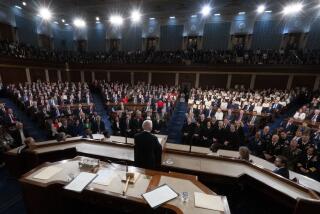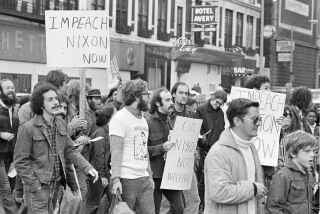For Americans, Prosperity Rests on Productivity
- Share via
Two thousand five hundred years ago, the world’s first economist, Aristotle, cautioned his students to distinguish between appearance and reality.
Now, we are in the eighth year of a major economic recovery, and it appears that we are all participating in unprecedented prosperity. Aristotle would ask, “That’s the appearance; what’s the reality?”
Since 1997, every family from the bottom 10% to the top 10% has seen its wages increase. That’s American progress. But the shocking reality is that prior to 1997, most workers lost pay under every president going back to 1973--Nixon, Carter, Reagan, Bush and Clinton. And the booming economy of the last several years has failed to make up for the losses.
What’s going on? How can reality be so different from appearance? Average hourly earnings of production workers rose steadily from the end of World War II, but then a stagnation and decline set in that swept up all but the very highest-paid workers. From a historic high of more than $13 an hour, the middle worker’s wages fell, hitting a low of $11.87 an hour in 1997. Eighty percent of all income groups saw their wages fall as well.
As the 21st century begins, the great American middle class is shrinking--and knows it. In December, Business Week reported that 75% of the public said the benefits of the “new economy” were unevenly distributed. Almost half said the recovery had not made their lives better.
Here in California, the Public Policy Institute reports that 70% of us believe the gap between rich and poor will get worse in the next decade. Against this backdrop, the seemingly unfocused discontent of the riots in Seattle against the World Trade Organization becomes less puzzling.
We hear very little about these facts because this is a debate that traditional liberals and conservatives are ill-equipped to handle. Liberals, even now, adhere to the only political point of view that recognizes that there is a problem. But liberals’ traditional concern is the plight of the poor, and traditional liberal solutions--an increased minimum wage and expanded job training, particularly for welfare recipients--although helpful are focused on workers at the very bottom.
But the problem is not limited to the bottom 20% of the population. It engulfs three out of four of us. And traditional liberal programs can’t be expanded to cover, in essence, the entire population.
Many conservatives are in even worse shape: They simply deny that the problem exists. So solutions will arise from neither left nor right but from a revitalized center. Not the Clintonian “triangulated” center that is a poll-driven device but a center that knows that it truly represents every American’s interests and a center that embodies America’s fate. That center will eventually focus on an unexpected culprit--its own lack of economic productivity.
From 1945 to 1973, American workers’ productivity grew at a yearly rate of 2.5% as business doubled its investment in plants and machinery for each worker from $4,000 to $8,000 in real dollars. Raises followed, and the middle class came fully into its own when the historic high in median wages was achieved at more than $13 per hour.
*
The historic high became a ceiling, and capital per worker actually retreated every year until 1996. As investment retreated, productivity growth collapsed to 1% and wages shrank to $11 an hour. Following the return of investment in 1996, productivity accelerated and raises returned. But wages are still nowhere near their historic high, and many economists are concerned that the recent spurt of investment will not continue.
If investment begins to falter, we face another quarter of a century of stagnant productivity and shrinking wages. To make up for the lost investment decades of the 1970s, ‘80s and ‘90s, a practical first step would be to create a national productivity investment market, much as we have created a massive market for municipal bonds, by creating tax-exempt productivity bonds. Making America’s workers more productive should be a preferred national investment. Our political culture must begin to recognize that prosperity rests on productivity, growing prosperity on expanding productivity and widely shared American prosperity on pervasive productivity.
Such a deliberation can only be led by the political center in America, but a rejuvenated center, a center with substance, a center with a soul.
More to Read
Inside the business of entertainment
The Wide Shot brings you news, analysis and insights on everything from streaming wars to production — and what it all means for the future.
You may occasionally receive promotional content from the Los Angeles Times.










